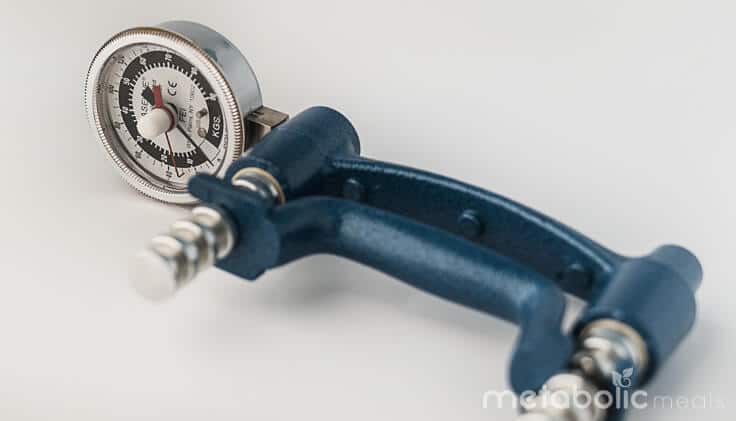Any CrossFitter will tell you it’s the intensity of the routine that separates him or her from the pack. But research shows that doing CrossFit too frequently without making some key adjustments can have undesired consequences.
Training consisting of a lot of volume and intensity produces substantial amounts of lactic acid — a compound created by the breaking down and oxidizing of glucose — and your muscle pH drops. When your body tries to rebalance the pH after a workout, it pulls glutamine — the most abundant amino acid in your body — from the muscle. This causes muscle tissue to break down in excess.
Without adequate rest, your body will soon run short on glutamine, which poses several problems: difficulty regrowing muscle tissue, a decreased ability to utilize carbs and restore muscle glycogen, and a weakened immune system. And extreme cases can end in rhabdomyolysis, where broken-down muscle proteins invade the bloodstream and damage the kidneys.
You also risk fatiguing your central nervous system (CNS), which recovers much more slowly than your muscles. When your CNS is fatigued by frequent overtraining, you’ll experience a drop in the neurotransmitters dopamine and acetylcholine, which assist in motivation, drive, and muscle contraction — all of which are necessary for peak performance. I experienced this difficulty firsthand many times when I was a wrestler.
Rest Is Your Most Important Routine
Athletes often share the mentality that the hardest worker in the room wins. While this can certainly be true, everyone has limits. Between twice-daily practices and multiple competitions each week, I found my limits eight weeks into wrestling season. I began noticing tell-tale signs like insomnia, irritability, loss of appetite, and decreased muscle mass.
If you love high-intensity workouts, it’s important to be conscious of pushing your muscular and nervous systems. The combination of intensity and volume that accompanies these types of workouts makes recovery a top priority. These three tips will help you keep your muscular, nervous, and immune systems in optimal condition:
1. Measure and modify.
Your hands are highly concentrated areas of nerve endings, so grip strength is an accurate measure of CNS fatigue. Establish a baseline score with an accurate hand dynamometer when you know you’re fully recovered. Then, before each training session, test again twice and average the score. A score of 95 percent or more means you’re good to go. A score of 90 percent to 94 percent means you should reduce the volume a bit. A score of 85 percent to 89 percent means you should reduce intensity and volume. Anything below 85 percent means you should take the day off.
The morning heart rate test will help you determine whether you’re in rest-and-relax mode or fight-or-flight mode. Establish a baseline by measuring your resting heart rate as soon as you wake up on a morning that you know you’re fully recovered. Then, measure it again every morning thereafter. A heart rate that’s 10 percent to 15 percent higher than normal means you should reduce your training for the day. A rate more than 20 percent higher than normal means you need to take the day off.
2. Use the high-low method.
As I got older, I learned the importance of recovery and what works best for me in that regard. Without the luxury of full days off, I rested by reducing aerobic exercise and doing intense but shorter 30-minute workouts in the weight room. As it turned out, total training volume seemed to have a more negative effect on my recovery than exercise intensity.
You need to rest, but you don’t necessarily have to do nothing on those days. Instead, use the high-low method — alternate high-intensity workouts with low-intensity ones. For example, if you sprint 10 sets of 100 meters at 90 percent or more intensity on Monday, decrease that on Tuesday by running eight sets of 150-meter tempo runs at a lower intensity of 60 percent to 70 percent.
3. Focus on nutrition.
If you’re undereating, you’ll overtrain even sooner than normal. Be sure you eat enough nutrient-dense foods to signal your body processes to work efficiently. Focus on high-quality protein and fibrous vegetables, which improve immune function, detoxification, tissue repair, and neurotransmitter replenishment. Carbohydrates are also vital to recovery, but pick carbs that are low in fructose, and place them post-workout when your body can utilize these foods best.
Intensity is good, and dedication to pushing yourself beyond your physical limits is admirable. But whether you’re a CrossFitter, athlete, or simply striving to be the best version of yourself, you won’t get far in meeting your goals if you don’t make time to rest and refuel properly.
Jason Barbour is a highly sought-after strength and nutritional consultant for busy executives and has worked with professional athletes from the NFL, NHL, and UFC, including three world champions and an Olympic medalist. In 2009, Jason started Metabolic Meals, one of the country’s largest healthy meal delivery companies with thousands of customers nationwide.









